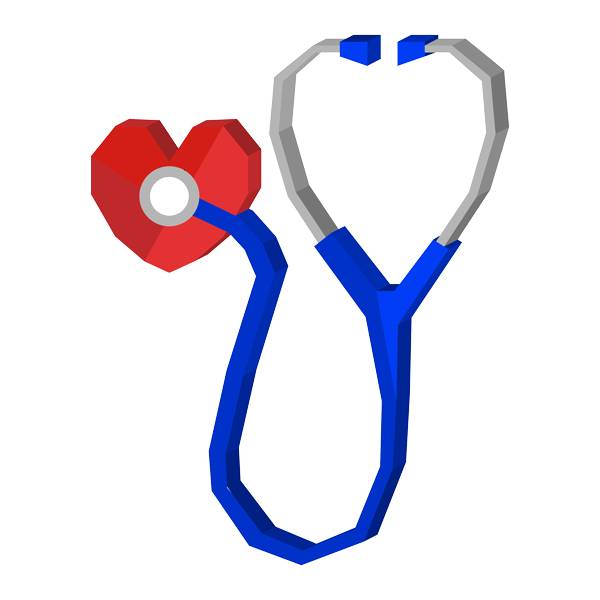Pressfarm is the first step towards telling your story to the world.
Brands that trust Pressfarm
Social Media Followers
Journalists and Bloggers
Use Pressfarm to reach out to outlets like Business Insider, Forbes, Mashable and many more.
– Shopify
We help online businesses get press coverage that make people say,
“Wow, this company is wonderful.”

Achieve Your PR Goals
Expert PR Campaign Support
We believe it’s time that your company received the press coverage it deserves. Our experienced team will support you in writing and distributing your press release and launching a successful PR campaign.
Learn More

High-Value Packages
Pressfarm offers a full suite of services designed to accelerate your business success. From creating relevant journalist email lists to distributing search engine-optimized press releases, we’ve got you covered with our budget-friendly packages.
Learn MoreOur Packages
From creating relevant journalist email lists to distributing search engine optimized press releases, Pressfarm has everything you need to get your PR campaign done.
Learn More
Results that Matter
Looking to elevate your public relations strategy? Our team of skilled account executives has years of experience in the field and connections with influential media professionals across the globe. As such, they are equipped with the knowledge, expertise, and tools to help you achieve your goals and generate buzz for your brand.
Learn More
Why work with us?

Industry Experience
We use a tailored approach for each client, one that combines the latest advances in the industry with powerful PR tools for guaranteed results – meaningful media coverage when it matters most.

Easy Outreach
With our one-stop PR platform, you can take care of press release writing, distribution, and targeted media outreach all in one place. Say goodbye to your outdated Excel sheets and pitch relevant journalists in a much more targeted way.

Expert Guidance
The PR team consists of PR industry veterans who know what it takes to help your brand stand out from the competition. As a client, you can enjoy the added benefit of advice from experts and meaningful insights that you can leverage for brand success.
Click a category and discover journalists in these fields

Crypto, Blockchain & NFT

Nutrition

Android

Fintech

Consumer Electronics

Fashion

Parenting

Crowdfunding

Apple

AI

Healthcare

Environment & Sustainability
SaaS & Tech

eCommerce
Podcasts
Are you an agency or a media contact database?
In a way we are both. Primarily, Pressfarm began as a tool to help startups search and find journalists from every niche in tech. With over 6,000 companies (and growing) that love Pressfarm, we have evolved out of the need by our clients to not only be a contact database but an agency as well that helps startups out with their PR at very startup-level costs.
Do you offer more services?
Yes, we are a full fledged PR agency that caters to startups. We now focus on startups from tech and other industries like fashion, media, health, entertainment, etc. Our services include press release creation and distribution, media kit creation, email pitching journalists on behalf of our clients, following up and ensuring they receive press coverage, Search engine optimisation (SEO) and Conversion rate optimization (CRO).
Why should I do my own PR?
The biggest reason why we advocate for Do-It-Yourself PR for startups is to ensure that the startup founder is the face of the company in the press. It is only the founder that can tell the story of the company better. It also saves a lot on agency costs. However, conducting the whole PR process is not a cup of tea for some founders and a lot of startup teams. Therefore, we also offer supplemental agency services for startups to ensure that the process of looking for media coverage is properly handled while they focus on building the product to be better.
Can I cancel at anytime?
Yes. Once you sign up, you are not tied to any binding agreements or contracts, you can cancel whenever you want to.
Will pressfarm write an article about my startup?
Yes, but only in the Campaign plan shall we write and post to our blog which receives thousands of visitors per month. The plan goes for $279 per year. We write a feature length article of upto 1500 words, publish it on our blog, our popular Medium channel, and share it across our social media networks to over 155,000 followers. We ensure that your feature article is shared in our newsletter too. And we have a lot of subscribers, over 20,000 to be precise.
Didn’t find an answer to your question? Check out our FAQ
Trusted by leading brands, all over the world.
Pressfarm helps companies get the exposure they need to accelerate their growth, increase brand visibility and improve sales.
Kevin Long
CEO and Co-Founder at The Dyrt
When launching a new business or product you need to tell the world about it. Pressfarm takes care of the How: by creating content worth communicating; and to Who: by targeting to the right audience.

Milton Jackson
Founder and Director Of User Experience (UX) at PicSpotr
It was difficult to find he right journalists for our startup when we needed to get the word out. Thanks to Pressfarm, we can now find journalists specific to our goals and needs. We are no longer wasting time and energy.
Larissa Murillo
Marketing Manager at MarketGoo
The folks over at Pressfarm understand the needs of a small company wanting to expand their PR reach. They are proactive and provide a personalized experience.
Chris Gadek
Head of Marketing at Ad Quick
Pressfarm has been such a time saver, I no longer have to scrape webpages for email addresses to find journalists. I can now quickly search for the right people and optimize my pitches. Pressfarm is a no brainer.
Subscribe for start up news and PR tips.
Where do I start when crafting my press release?
Do I need more than one press release?
How long should my press release be?
Does Pressfarm write my press release?
- 1. Full Name
- 2. Email Address
- 3. Twitter handle
- 4. LinkedIn profile link
- 5. Short bio
- 6. The Niche(s) you cover
- 7. Industry keywords by which our users can search for you - usually related to your niche(s) (e.g Apple news, health, education technology, etc)
• Startup review and ranking sites.
• Startup focused blogs and communities.
Each site is curated for important metrics, including • Quality Backlinks.
• Established review process.
• Startup Relevance.
• Freshness. " } }, { "@type": "Question", "name": "Where do you submit my startup?", "acceptedAnswer": { "@type": "Answer", "text": " We submit your company to directories that fit its profile. There are hundreds of directories available for submitting startups. However, we curate high-quality directories and exclusively submit your company to directories that match the profile we generate for it, from the questionnaire we send you after signup. " } }, { "@type": "Question", "name": "Why should I use Pressfarm as my PR agency?", "acceptedAnswer": { "@type": "Answer", "text": " Most agencies charge high fees for little results. We’re different. We hit the ground running and waste no time creating your PR strategy and building out a media relations plan. We aren’t held back by corporate bureaucracy or over-complicated processes. We have the relationships, the experience and understanding of the news industry to help you raise awareness of your company.
Which PR agency package should " } }, { "@type": "Question", "name": "Which PR agency package should I choose?", "acceptedAnswer": { "@type": "Answer", "text": " Every client is unique. However, we can make a couple of recommendations: • Small startups with a single story to pitch will probably find the Power Pack is the most cost-effective option.
• A larger company with a big product launch or multiple storylines to pitch - and which therefore needs significant press interest - will usually find the Premium Pack is the best fit. " } }, { "@type": "Question", "name": "How do you get media placements?", "acceptedAnswer": { "@type": "Answer", "text": " We pitch media contacts personally and individually, for a higher success rate. Nothing in PR is guaranteed. Timing, location and newsworthiness are all factors that could either help or hinder the media relations campaign. However, we will do everything we can to position you to be as newsworthy as possible. Rather than mass mail-merge blasts like some agencies rely on, we make personal and individual pitches to each media contact. While it’s more time consuming, this ensures a higher success rate. " } }, { "@type": "Question", "name": "I need advice on a single item/project. Can you help?", "acceptedAnswer": { "@type": "Answer", "text": " Yes, check out our pioneer package or PR consultant service for advice on demand via email, phone or video chat. " } }, { "@type": "Question", "name": "Where do I start when crafting my press release?", "acceptedAnswer": { "@type": "Answer", "text": " To get started with your press release writing, you can chat with our team to identify your news item and guide you on the best practices. During this chat, our team will guide you on the best strategies and distribution service to use for high quality results and reports at startup costs. " } }, { "@type": "Question", "name": "Do I need more than one press release?", "acceptedAnswer": { "@type": "Answer", "text": " In some cases you might need more than one press release. Ideally, we will recommend the releases are sent out on different dates in order to measure impact before you send a second and third one. Additionally, press releases should be based on newsworthy stories. However, if you to send out two press releases, you should consider having a different news item for each. " } }, { "@type": "Question", "name": "How long should my press release be?", "acceptedAnswer": { "@type": "Answer", "text": " Press releases need to range between 300 and 800 words in length. It is important to know that the length of your press release can directly affect how it is distributed. For instance, news releases that are shorter than 300 words might not be taken seriously by the search engines as news while those longer than 800 words might also be mistaken to be a blog and not listed in search engines as news. " } }, { "@type": "Question", "name": "Does Pressfarm write my press release?", "acceptedAnswer": { "@type": "Answer", "text":" As per our pricing page, we write the press release in some packages and not in others. However, if you find it confusing please chat with a member of our team on our site for clarification. "} }] }
Pressfarm database
Why should I use the Pressfarm database in addition to getting a custom media list?
Managing a startup isn't easy.
Pressfarm's database makes it easy for startups to capture media attention and generate coverage in media outlets and popular blogs. Any of our packages allows you access to the database for an entire year. With this database, you can search for journalists in different industries and unlock contact information using credits. Moreover, our on-demand media lists contain contact information for the best people to help you tell your story.
Having newsworthy content is not quite enough anymore, especially if you can’t get it in front of the right eyes. With a custom media list, you will have a higher chance of getting press coverage and media attention from journalists and bloggers in your niche.
After Pressfarm's PR experts and expert writers have created quality content for you, our Account Executive will create custom media lists for you. These contacts are pulled from different sources and networks, including our comprehensive database of over 1 million contacts across different industries. Your personalized media lists should help you boost your media outreach by connecting with the best journalists in your niche. The number of media contacts you get will depend on the package you’ve chosen.
Is the database up to date?
Pressfarm works around the clock to ensure that journalists' contacts are up-to-date. We are always welcoming new media professionals to our database. While we strive to only work with updated contact information, we sometimes miss one or two contacts that may need updating; if you think a contact is out of date, you can let us know by sending us feedback through our live chat or emailing info (at) pressfarm2022.mystagingwebsite.com.
Can contacts be filtered by country, interests, and job title?
Currently, clients can only filter contacts by job interests and publications. But, as our services continue to evolve, we are working on a country filter. At the moment, our contacts are primarily based in the US, UK, Canada, and Australia. Since we work with clients all over the world, the upcoming country filter will help people like you to the perfect media match in your region and beyond.
How are contacts filtered?
As previously mentioned, these contacts are filtered by niche/industry. Given that some sectors, like technology, are a broad niche, Pressfarm recommends that some startups consider a sub-niche that will generate better results.
For example, let’s look at the gaming industry. While gaming is technically in the technology niche, a tech journalist who usually creates content about mobile phones or other devices will probably not be interested in the new game your company has built. In this case, we would advise you to search for journalists who are specifically focused on gaming. To this end, our account executive would also create a customized media list to fit your new game.
Can contact information be downloaded as a CSV file?
Our database has been built to be used on-the-go. Even so, downloading mass email addresses is not wise because it encourages mass emailing. This might seem convenient to you, but in the media world, mass emailing is regarded as spam. Our PR experts have enough experience working with the media to know that personalized email pitches are always more effective than mass pitches. There is no world in which spamming will help you achieve effective media coverage. Trust us on that one.
For journalists & media professionals: How do you request to be added to Pressfarm's media database?
We are constantly looking for new journalists and media professionals to add to our platform. To be added to the database, send us a request through our contact page and include the following required information.
1) Full Name
2) Email Address
3) Social media handles
4) Short Bio
5) The niche/industry you cover
6) Industry keywords where our clients can search for you
We will review your profile, and if all required information is provided, you will be added to the database within a few days.
PR content creation
Our PR professionals and expert writers help create newsworthy content ranging from email pitches, press releases, and email pitches to press kits.
How do I begin the process?
Once you’ve chosen a PR package, Pressfarm needs to know all the important information about the brand so that our PR professionals and expert writers can create newsworthy content to connect with media professionals in your niche.
Start by filling out a questionnaire to help Pressfarm's expert writers understand what you are looking for. It’s also important to upload any attachments you believe are important.
What type of content does Pressfarm help create?
For the Starter & Launch PR packages, Pressfarm's PR experts will only proofread and review your pre-written press release. Furthermore, they will develop:
● A professionally-designed press/media kit (up to 3 pages): This includes company background, brand brief, vision, mission, photos/videos, and more
● A personalized PR action plan (up to 2 pages) on strategies and PR industry trade secrets to maximize press coverage
● A tailor-made PR media lists from an Account Executive for initial PR outreach (up to 1000 media contacts)
● A feature story about your brand which is then shared on Pressfarm's email newsletter and social media channels (only with the Launch package)
For the Campaign PR package, Pressfarm's PR experts will create:
● A professional press release (up to 1000 words)
● A professionally-designed press/media kit (up to & between 5-8 pages)
● A personalized PR action plan (up to 3 pages) on strategies on PR industry secrets
● A tailor-made PR media list from an Account Executive for PR outreach and relationship-building with journalists (up to 2000 media contacts)
● A feature story about a company shared on our email newsletter and social media channels.
● Guest posts about the company published on Google News to increase brand credibility and online visibility (up to 500 words)
Pressfarm can also guide startups and companies that are looking to create their own press release. Our PR experts and an account executive will provide advice on the best strategies and distribution services to use for high-quality results and reports. Best of all, you can get this advice at a startup-friendly cost.
PR Agency Services
Why should I hire Pressfarm as my PR agency?
Most agencies charge high fees for little results. We aim to be different.
Pressfarm wastes no time creating a PR strategy, creating newsworthy content, and building a media relations plan.
We are not held back by corporate bureaucracy or over-complicated processes.
We have networks, experience, and an understanding of the media industry – all of which are required to help you raise awareness for your company.
Which PR agency package should I choose?
Every client is unique.
Every new client has different needs for their PR Outreach. Because of this, we have created 4 PR packages for startups and companies to choose from.
1) Starter - $90 one-time charge
A great place to start for small teams looking for the fundamentals to take their communications to the next level.
2) Launch - $180 one-time charge
Ideal for growing companies hoping to increase their press coverage, improve their reach and build long-term relationships with the media.
3) Campaign - $480 one-time charge
Equip your business with tools for success from our PR Experts. Generate the publicity your brand deserves and reach audiences across the globe.
4) Enterprise - $980 one-time charge
Equip your business with the full power of Pressfarm. Gain complete control of your brand and tell a consistent story across the globe. Ideal for companies preparing for a big product launch or with multiple stories to pitch, who need a PR expert to help them reach leading press contacts.
I only need help with a single component/project. Can Pressfarm help?
Yes, check out our PR consultant service for advice on-demand via live chat on our website, email, and phone. Please email us at info@pressfarm2022.mystagingwebsite.com for more information.
Should I budget for any other additional costs after purchasing a PR package?
When you choose a PR package, there are no hidden costs. Our PR experts will provide everything listed for each package at no additional cost. You will only need to pay extra if you want additional features or content.
PR Distribution Processes
Pressfarm's PR distribution process is designed to send out all newsworthy content to media professionals and distribute it online to increase brand visibility in relevant search results across major search engines like Google, Yahoo, and Bing! We also distribute this content to startup directories to boost brand awareness.
How do you achieve media placement?
We go into the PR outreach process with the understanding that nothing in PR is guaranteed. However, we will do everything we can to position your business in a positive light and highlight the newsworthy aspects of your story. Rather than sending mass emails as some PR agencies do, our PR professionals craft personalized pitches to each media contact to ensure a higher success rate.
What are startup directories?
Companies use startup directories to try and get initial promotion and achieve visibility online. These are the best places to post your product/startup/app and get feedback, early adopters, and press coverage. Submitting to a startup directory is essential for proving a business concept and gaining traction with early users.
Where do we submit your startup/company?
There are hundreds of directories available for submitting startups. However, we’ve curated a list of high-quality directories. Additionally, we exclusively submit your company to directories that match the profile we generate for it, based on the questionnaire you fill after signup.
How long does the directory submission process take?
After submission, directories usually take between a day and a few weeks, usually a maximum of 14 business days, for review and acceptance.
In some cases, acceptance to a directory requires the creation of a login account. In this case, Pressfarm will send you the login details for each account we create. These accounts are created using a company's email address.
Once your submission is accepted into a directory, you will receive an approval email.
Pressfarm is committed to finding the best communities for every company, including:
• Niche, startup directories (with an editorial review process).
• Startup review and ranking sites.
• Startup focused blogs and communities.
Each site is curated for essential metrics, including
• Quality Backlinks.
• Established review process.
• Startup Relevance.
• Freshness.
Press Releases
Where do I start when crafting my press release?
To get started with your press release writing, you can chat with our team to outline your PR outreach needs, and we will guide you on the best practices. Our team will guide you on the best strategies and distribution services to use for high-quality results and reports at startup costs during this initial chat.
Do I need more than one press release?
In some cases, you might need more than one press release. Ideally, we will recommend that the releases be sent out on different dates and to different media professionals to create a more meaningful impact before sending a second and third one.
Additionally, press releases should be based on newsworthy stories, and if you plan to create more than one press release, you should consider having a different news item for each.
How long should my press release be?
A standard press release should range between 300 and 400 words in length. It is essential to know that the size of your press release can directly affect how it is distributed. For instance, news releases that are shorter than 300 words might not be taken seriously by the search engines as news, while those longer than 800 words might also be marked as a blog and not listed in search engines as news.


















